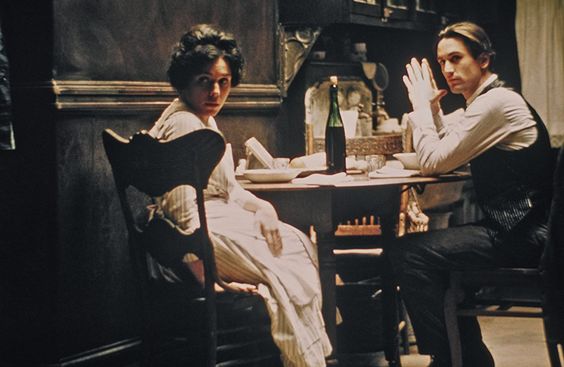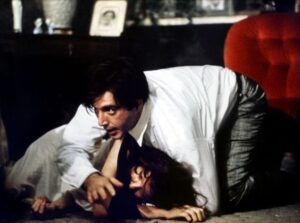
The Godfather: The Movie that Villified the Cannoli Turns 50

If I learned anything from the Godfather III, it’s never to accept a cannoli from my goddaughter – sorry Kendall! In the last of the series, Connie Corleone, the sister of the Godfather, learns that her godfather, Don Altobello, is behind the plot against her family. In quiet retaliation, she gives him a poisoned cannoli for his 80th Birthday celebration at the Opera. The Opera scene is staged at the Teatro Massimo in Palermo, Sicily, the Cannoli Capitol of the world, so a cannoli killing is indeed appropriate. Anthony Corleone, Connie’s nephew, is playing Turridu in the opera Cavalieria Rusticana, set on Easter Morning in Sicily. Written by Pietro Mascagni, the opera premiered in 1890. Don Altobello hungrily and messily engulfs the poisoned cannoli in his seat, and quietly asphyxiates to his death, as Anthony gives an amazing performance in strong tenor voce.
The Godfather turns 50 in March this year. What I love about the Godfather series is that they consistently honor food as part of Italian and Italian-American culture. Clemenza shows Michael Corleone how to make Italian gravy – tomato sauce. But it’s the cannoli from the beginning that gets the worst rap of all Italian foods. The line in Godfather I delivered by Clemenza after Rocco kills Paulie Gatto – “leave the gun, take the cannoli,” cements the confection as the most evil of all Sicilian foods, being on scene or even the perpetrator of the most famous hits in the series.
My Grandmother took her sister, my great aunt Emma, to the original premier in 1972, thinking it would be in her words, “a great show about a devout Catholic family.” Neither knew how murderous the devout Catholic Italian family would be and how bloody the movie would be.
The evil Cannoli originated in Palermo, Sicily, said to have been invented during the occupation of Sicily by the Ottoman Turks, as a phallic tribute to the leader of the harem. It’s filling, piped into a crusty deep fried pastry shell, is made from lightly sweetened sheep’s milk ricotta cheese, and usually only has a candied cherry or orange peel, or a dusting of pistacchios.
So, given that most cannoli in the U.S. are made with cow’s milk ricotta, the Cannoli purists would say that they’re not authentic cannoli. To Sicilians, cannoli is a religion. Most eat one or two of them daily, so its authenticity is a sacred thing. They’d also say that our Disneyfication of flavors in the U.S., with holiday specific creams like peppermint or eggnog for Christmas, also take it out of the authentic category.
I am not on the purist side of the fence, nor am I Sicilian, and encourage food fusions and new flavors wherever possible. So I am all about new and creative flavors for cannoli like what Del Gardo’s in Covington serve. I offered two flavors of Del Gardo’s cannoli at my annual family Easter lunch and they were a huge hit. I even think there should be savory cannoli – like Cincinnati Chili inspired or curry cream filled.
